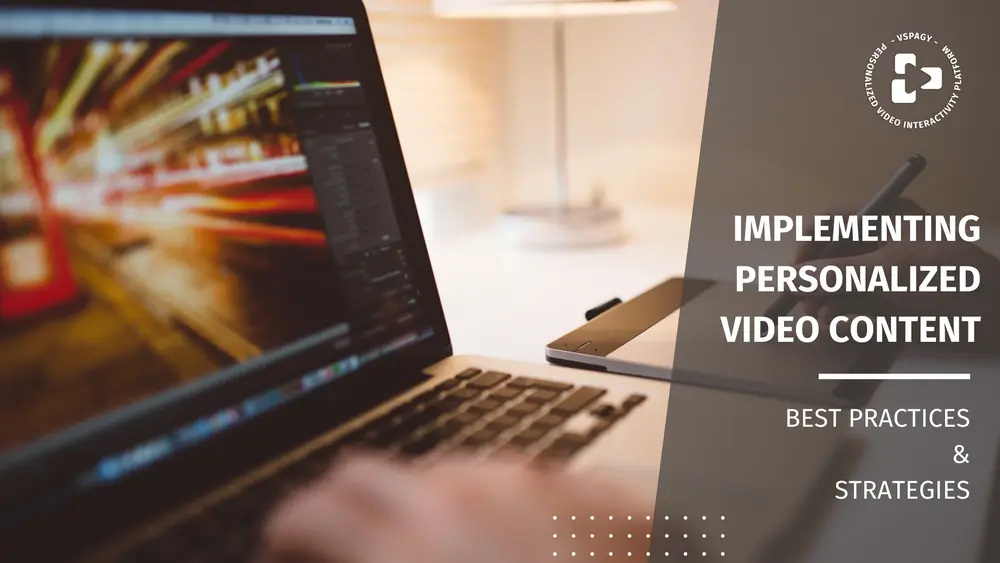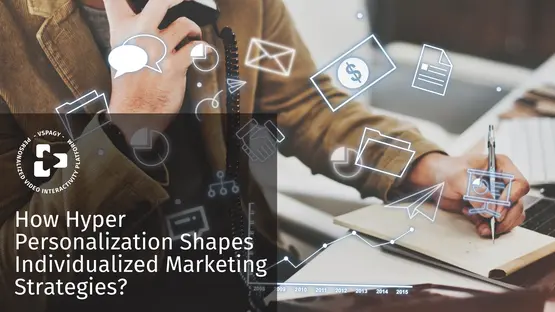Implementing Personalized Video Content: Best Practices and Strategies
Feb 26, 2024

Introduction
Any seasoned marketer is aware that video is one of today's most successful advertising methods. If you take a step further and include customisation, you'll have an unrivaled combination and an edge over your competitors.
Conversion rates rise with both customization and video. So why not combine the two to produce a technique that is even more effective: personalized video content?
Using customer data (name, email, location, photos, etc.) from your CRM, video personalization makes amazing video experiences that draw in more people and increase return on investment. Personalized video, in contrast to regular video, is made specifically for each viewer and is therefore unique to them.
Top Strategies to Keep in Mind
The essence of successful personalised video content lies in understanding your audience deeply. From collecting relevant data to creating dynamic content, each step contributes to providing a tailored viewing experience. This journey also involves leveraging advanced algorithms and incorporating interactive elements to enhance viewer engagement.
Ensuring seamless video delivery across various platforms is crucial for a positive user experience. Yet, the journey doesn't conclude there - the blog will delve into measuring and analyzing performance, offering insights to refine and adapt your strategy over time.
-
Understand Your Audience
Begin by diving carefully into your target audience's demographics, preferences, habits, and interests. Surveys, market research, and consumer feedback analysis can provide significant information. This foundational understanding forms the basis for creating personalized video content that resonates and engages effectively with your audience.
-
Collect Relevant Data
Gather accurate and comprehensive data from diverse sources, such as customer profiles, browsing history, and social media interactions. Implement robust data collection methods, ensuring compliance with privacy regulations. Detailed and precise data enables the creation of more personalized video content, tailored to individual preferences and behaviors.
-
Dynamic Content Creation
Develop modular content elements that can be dynamically arranged in real-time to create a unique viewing experience for each user. This approach involves creating adaptable video content based on factors like location, past interactions, and browsing history, enhancing the relevance and personalization of the content.
-
Personalization Algorithms
Incorporate advanced algorithms that analyze user data and behavior patterns. Leverage machine learning and artificial intelligence to continually refine personalization accuracy. These algorithms should consider various factors, such as preferences, engagement history, and contextual information, ensuring the delivery of a compelling and personalized video experience.
-
Interactive Elements
Incorporate interactive elements into tailored movies, such as clickable buttons, quizzes, and personalized calls to action. Such aspects not only increase user engagement, but also give useful data for improving customization algorithms, resulting in a more immersive and delightful watching experience.
-
Optimize Video Delivery
Ensure seamless delivery of personalized videos across diverse platforms and devices. Optimize streaming to minimize buffering and loading times, creating a smooth viewing experience.
Develop adaptive streaming methods that optimize video quality dependent on the viewer's internet connection speed. Optimized video distribution enhances the user experience and encourages more consumption of tailored content.
-
Measure and Analyze Performance
Regularly monitor and assess the performance of tailored video material. Monitor critical data including engagement, click-through, and conversion rates. Use analytics tools to see how different customization tactics influence user behavior.
Based on data analysis, refine your personalization approach iteratively, ensuring alignment with evolving audience preferences and market dynamics. Regular assessments contribute to an adaptive and effective personalised video strategy.
Frequently Asked Questions
How can I create effective personalized video content?
To create effective personalized video content, analyze audience data, tailor messaging to individual preferences, incorporate dynamic elements, and maintain relevance. Regularly assess performance metrics, ensuring a balance between customization and user privacy for optimal engagement.
How can I determine the right audience for personalized video content?
To identify the right audience for personalized video content, analyze user demographics, preferences, and behaviors using analytics tools. Conduct surveys to gather insights, ensuring the content aligns with the audience's interests for maximum engagement.
What types of personalization can be applied to video content?
Personalization in video content can include dynamic content insertion, tailored recommendations, interactive elements, and customized calls-to-action. These techniques ensure that the video resonates with individual viewers, enhancing engagement and relevance.
Conclusion
If you incorporate the personalized video content into your content directly, finish it with a call to action that sends visitors to a landing page designed to increase conversions. By personalizing videos at strategic points in the buyer's journey, you can grab prospects' interest and establish enduring, high-caliber connections with them.
This can therefore result in an enormous rise in the number of conversions overall as well as in client acquisition and retention. Providing customers with the precise experience they desire pays off from the top of the funnel to complete the purchase and beyond.
Signup to VSPAGY SaaS Platform to create your personalized video content for free.
Check out some Recommended Articles here:
-
Automobile Companies Personalized Interactive Video
-
Accelerates Customer Engagement VSPAGY's Personalised Videos
-
Tactics to Make Catchy Customer Engagement Videos


